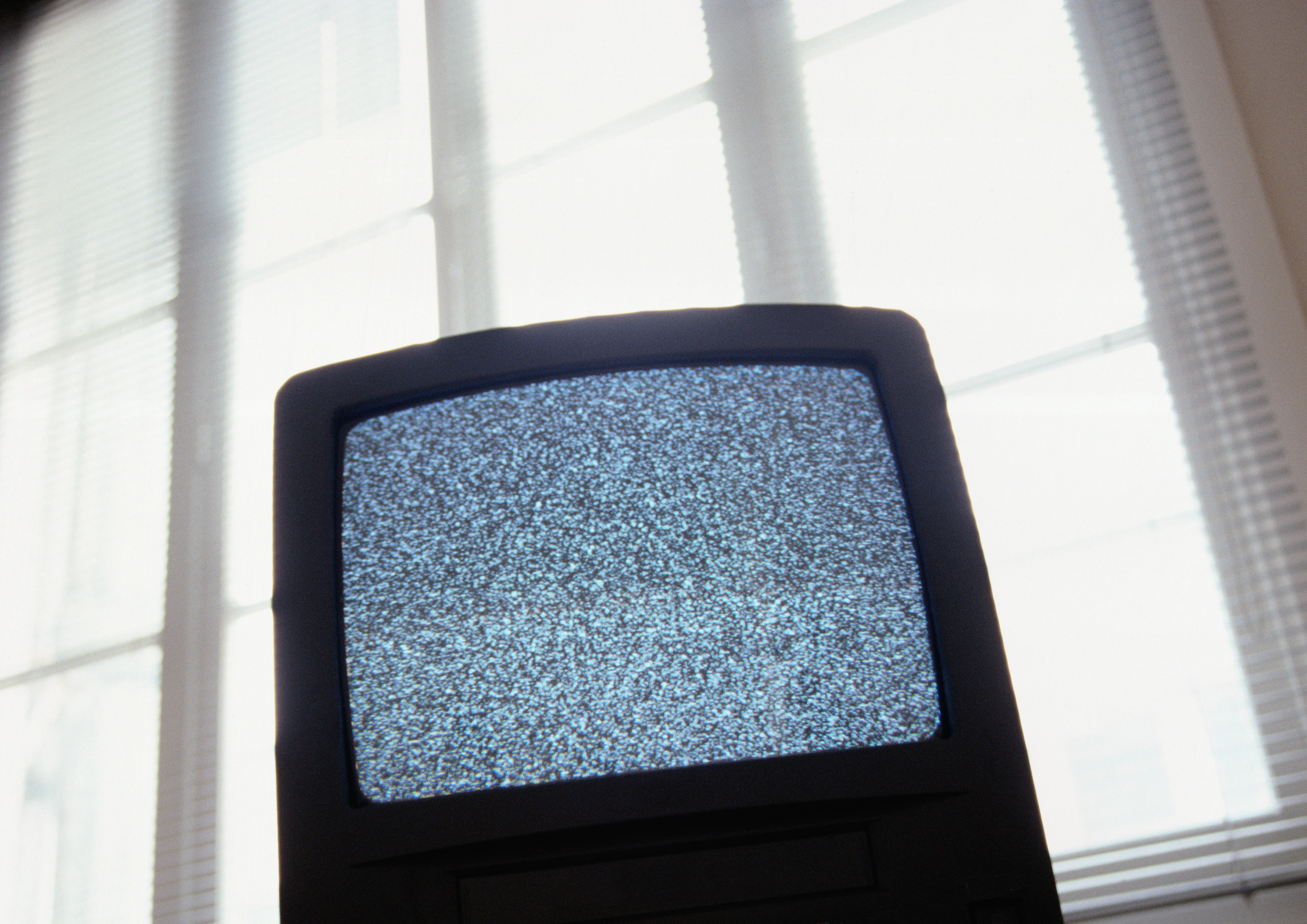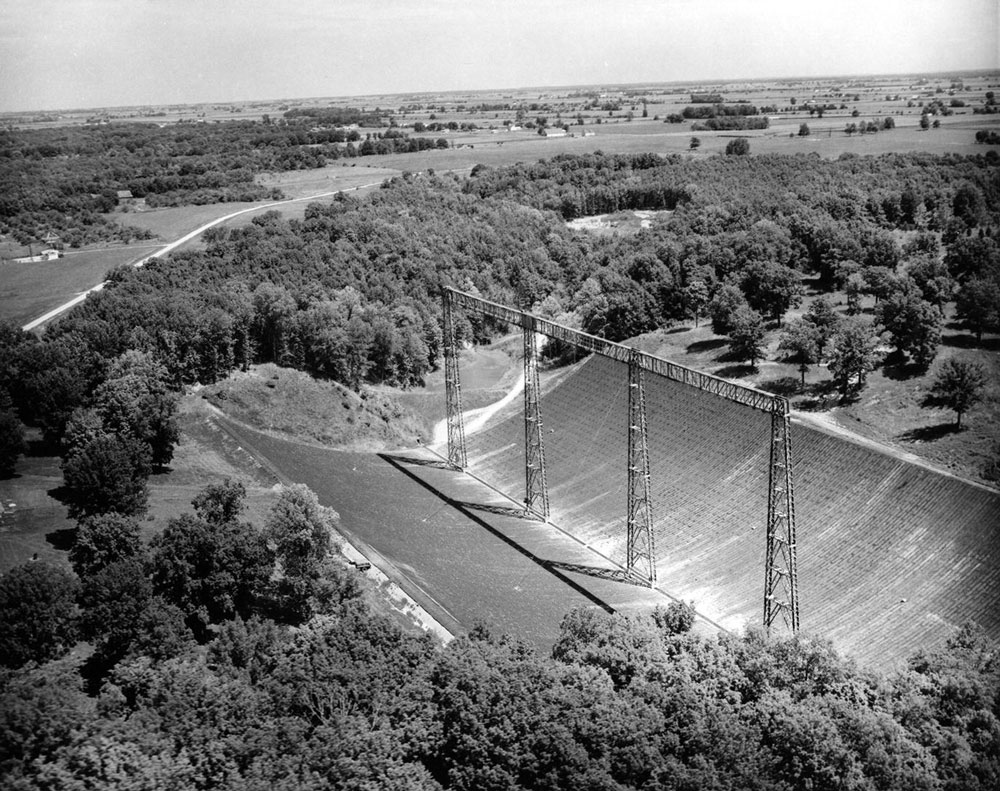The DU Lounge
Related: Culture Forums, Support ForumsWhy Channel 37 Doesn't Exist (And What It Has to Do With Aliens)
Since the advent of analog TVs, channel 37 has always been static. Here's why.https://www.vice.com/en/article/dy8by7/why-channel-37-doesnt-exist-and-what-it-has-to-do-with-aliens

I’m endlessly fascinated by stories of the quirks that were built into the TV system where the well-laid plans of the system simply fell apart because it was asked to do too many things. Nearly five years ago, I wrote about one of them, the tale of how radio broadcasters were able to shoehorn an additional FM station into the radio because of the proximity of TV’s channel 6 to the rest of the radio feed. So when I was informed that there was another oddity kinda like this involving the TV lineups, I decided I had to take a dive in. It’s a tale that centers around channel 37, which was a giant block of static in most parts of the world during the 20th century. The reason for that was simple: it couldn’t fend off its scientific competition.
1952
The year that the U.S. Federal Communications Commission opened up the television system to use UHF, or ultra high frequency signals. The practical effect of this addition of bandwidth was that the total number of potential TV stations increased dramatically, from 108 to 2,051, overnight. The first UHF applications were granted on July 11, 1952, according to The History of UHF Television, a site dedicated to the higher-frequency television offerings.

The radio telescope that became a headache for the television industry
Within a 600-mile radius of the city of Danville, Illinois, population 31,246, are numerous major cities—among them Chicago, Detroit, Milwaukee, Atlanta, Minneapolis, Pittsburgh, St. Louis, Toronto, and Washington, DC. Nearly the entire length of the Mississippi River fits into that radius. If Danville was located just a little farther to the east, the radius would also include Philadelphia and New York City. For all intents and purposes, a 600-mile radius from Eastern Illinois covers basically the entire East Coast except the state of Florida and the Northeast. (Importantly to this story, New Jersey generally does not fall into this 600-mile radius.) But there was something located in Danville that was important enough to scientists that they didn’t want to share it with anyone else.
And that thing was a 400-foot-wide radio telescope, operating along the 610 MHz frequency. It was something of a monster of astronomy at the time, operating 12 to 16 hours per day, and researchers at the University of Illinois aimed to keep it that way. The research that led to the creation of the radio telescope was, basically, an accident—but a fundamental one that taught us more about the universe than we might have learned with a mere optical telescope. In 1931, a radio engineer and Bell Laboratories employee named Karl Jansky was trying to uncover the source of static that was interfering with radio waves … and found it had an extraterrestrial source, particularly at the center in the Milky Way galaxy. Jansky wasn’t an astronomer, but an engineer, and despite discovering a new field of astronomy, his position at Bell Labs did not allow him to pursue it further.
snip
Dawson Leery
(19,456 posts)jmowreader
(52,558 posts)When the FCC allocated the VHF TV spectrum, they created thirteen 6-megahertz-wide channels starting at 48MHz. You can tell there was no coordination between departments because the VHF Low police band runs up to 50MHz, and there were lots of cop shops allocated spectrum between 48MHz and 49MHz. The feds tried to get the police to move to below 48MHz, but the police were resistant: they'd been there for twenty years and they didn't have the budget or time to change the frequency the radios operated on. (Unlike today's radios, where you can just turn a knob or punch some numbers into a keypad to put them on a new frequency, a frequency change on an old Motorola or GE police radio required a trip to the dealer to have parts replaced.) The only thing the FCC could do was to eliminate Channel 1 from the TV spectrum. Since there were already thousands of TV sets in private hands they couldn't renumber the channels.
mwooldri
(10,668 posts)97 to 108 was used by the police. It took a long time to clear them out of this band.
Dagstead Bumwood
(5,900 posts)It had separate dials for VHF and UHF channels. The TV was hooked up to an antennae that rotated by using a large dial on a base that sat on the floor next to the TV. I used to love to tur the dial then run to the window to watch the antennae turn.
BigmanPigman
(53,406 posts)My mom said that in the 60s there was a snowstorm and the antennae was frozen in place, trying to move and the antennae made the base inside the house super hot. My dad had to disconnect it temporarily.
I like the Pink Floyd lyrics from The Wall...."13 channels of shit on the TV to choose from".
Bird Lady
(1,993 posts)I am the slime.
I am gross and perverted
Im obsessed n deranged
I have existed for years
But very little had changed
I am the tool of the government
And industry too
For I am destined to rule
And regulate you
I may be vile and pernicious
But you can't look away
I make you think Im delicious
With the stuff that I say
I am the best you can get
Have you guessed me yet?
I am the slime oozin out
From your tv set
You will obey me while I lead you
And eat the garbage that I feed you
Until the day that we don't need you
Don't got for help...no one will heed you
Your mind is totally controlled
It has been stuffed into my mold
And you will do as you are told
Until the rights to you are sold
That's right, folks..
Don't touch that dial
Well, I am the slime from your video
Oozin along on your livinroom floor
I am the slime from your video
Cant stop the slime, people, lookit me go
AllaN01Bear
(26,682 posts)antenna move . would mess up her tv reception . pre coit towers in sf.
modrepub
(3,891 posts)I remember a set order of stations I'd used to listen to on normal long drives. As the signal weakened, I'd switch to a station with a similar format in another city. On regular trips from Philly to State College in the late 80s and early 90s there as a set station progression I'd follow. WSP or MMR until I got past Lancaster then switched to a a couple Harrisburg stations (WTPA maybe) that I can't remember. Once I got to the Lewistown narrows I was then on stuck in the desert of bland easy listening, top 40 or country radio. The radio selection at school was basically Madonna repeated over and over or Neil Diamond.
I remember meeting a friend of mine in the dorm who introduced me to someone who had a radio signal booster. If the skies were clear and the wind just right he could pull in the Philly or Harrisburg stations very faintly. For a home-sick, music starved kid in college it was a short small reprieve from my worries to hear the familiar DJs from home banter on for the short time between songs or hear a familiar commercial describing places I had once frequented.
twodogsbarking
(14,621 posts)The music still sucks. Have lived in SC since 84.
rurallib
(63,967 posts)summer. We would often stay up all night trying to see how far away we could pick up stations.
We were in the middle of the country (southern Iowa) and could all but west of the Rockies and Florida. We got several stations in Canada.
We also would play with the VHF tv dial all night. There were what were called "skip signals" where the TV signal would bounce arid the atmosphere after dark.
We could get NYC, Louisville, Seattle (mountains didn't stop skip signals) and Omaha for example.
John1956PA
(4,315 posts)mwooldri
(10,668 posts)Most broadcast right wing shit but still interests me to see how far the signal goes. Thanks to the ionosphere one can generally hear WBT 1110 better in Upstate New York (at night of course) than 100 miles away from their transmitter site at any time of day.
The nighttime skip is what led Radio Luxembourg to be successful from the 1950s to the 1980s. People in the UK tended to have a choice of BBC Home Service, Light Programme or Third Programme (now BBC Radio 4, 2 and 3 respectively) and that was it. Pop music was not frequently played. People turned to the pirate stations broadcasting at sea (barely legal) or Luxembourg (legal, just international). BBC then launched Radio 1, and it still had to share frequencies with Radio 2. Commerical local radio didn't come til the late 70s/early 80s. The late 80s saw the end of AM/FM dual broadcasting, the clearing out of the police from the FM band, more local FM stations, Radio 1 on its own FM frequency, and national commerical radio. Luxembourg "died" in 1991, when it switched to Oldies and aimed at Germany, not the UK where Luxembourg could cover 24 hours a day and not just at night due to skywave.
jmowreader
(52,558 posts)The atmosphere is a weird thing...in certain meteorological conditions radio signals will travel a very long way. It's called ducting because it acts like the signal entered a really long heating duct.
I used to live in Fayetteville, NC, and work in Lumberton, NC. There was a 10-mile-wide duct between those two cities that would carry stations from Dallas to my car.
eppur_se_muova
(39,543 posts)... astronomical radio sources could actually be picked up by old analog TVs tuned between stations, though I don't remember whether it was UHF or VHF, or what the source was. ![]()
Quite a lot of the radio spectrum has been set aside for radio astronomy:
https://en.wikipedia.org/wiki/Radio_astronomy#Frequency_allocation
rurallib
(63,967 posts)It was set aside across the country like that.
I worked in a gas station that allowed us a radio, but no TV - so we listened to the TV on the radio.
AllaN01Bear
(26,682 posts)Wolf Frankula
(3,771 posts)I watch it a bit. And if you have rabbit ears on your TV, do you get Bugs Bunny cartoons.
Wolf
(a Bugs Bunny fan)